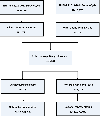Association of cardiovascular diseases with cognitive performance in older adults
- PMID: 38575050
- PMCID: PMC11162917
- DOI: 10.1016/j.ahj.2024.03.016
Association of cardiovascular diseases with cognitive performance in older adults
Abstract
Background: Cognitive function and cardiovascular disease (CVD) have a bidirectional relationship, but studies on the impact of CVD subtypes and aging spectrum have been scarce.
Methods: We assessed older adults aged ≥60 years from the 2011 to 2012 and 2013 to 2014 cycles of the National Health and Nutrition Examination Survey who had coronary heart disease, angina, prior myocardial infarction, congestive heart failure, or prior stroke. We compared CERAD-IR, CERAD-DR, Animal Fluency test, and DSST scores to assess cognitive performance in older adults with and without CVD.
Results: We included 3,131 older adults, representing 55,479,673 older adults at the national level. Older adults with CVD had lower CERAD-IR (mean difference 1.8, 95% CI 1.4-2.1, P < .001), CERAD-DR (mean difference 0.8, 95% CI 0.6-1.0, P < .001), Animal Fluency test (mean difference 2.1, 95% CI 1.6-2.6, P < .001), and DSST (mean difference 9.5, 95% CI 8.0-10.9, P < .001) scores compared with those without CVD. After adjustment, no difference in CERAD-IR, CERAD-DR, and Animal Fluency test scores was observed, but DSST scores were lower in older adults with CVD (adjusted mean difference 2.9, 95% CI 1.1-4.7, P = .001). Across CVD subtypes, individuals with congestive heart failure had lower performance on the DSST score. The oldest-old cohort of patients ≥80 years old with CVD had lower performance than those without CVD on both the DSST and Animal Fluency test.
Conclusion: Older adults with CVD had lower cognitive performance as measured than those free of CVD, driven by pronounced differences among those with CHF and those ≥80 years old with CVD.
Copyright © 2024 Elsevier Inc. All rights reserved.
Conflict of interest statement
Conflict of interest Sikand NV: Dr. Sikand reports being a consultant for Bristol Myers Squibb; Frampton: Dr. Frampton reports current research support from the Patient-Centered Outcomes Research Institution (PCORI); Damluji AA: Dr. Damluji receives research funding from the Pepper Scholars Program of the Johns Hopkins University Claude D. Pepper Older Americans Independence Center funded by the National Institute on Aging P30-AG021334 and receives mentored patient-oriented research career development award from the National Heart, Lung, and Blood Institute K23-HL153771-01; Nanna MG: Dr. Nanna reports current research support from the American College of Cardiology Foundation supported by the George F. and Ann Harris Bellows Foundation, the Patient-Centered Outcomes Research Institute (PCORI), the Yale Claude D. Pepper Older Americans Independence Center (P30AG021342), and the National Institute on Aging/National Institutes of Health from R03AG074067 (GEMSSTAR award). Dr. Nanna also reports being a consultant for Heartflow and Merck. The rest of the authors have nothing to disclose.
Figures




References
-
- Pérez Palmer N, Trejo Ortega B, Joshi P. Cognitive Impairment in Older Adults: Epidemiology, Diagnosis, and Treatment. Psychiatr Clin North Am 2022;45(4):639–661. - PubMed
-
- Hofman A, Ott A, Breteler MM, Bots ML, Slooter AJ, van Harskamp F, et al. Atherosclerosis, apolipoprotein E, and prevalence of dementia and Alzheimer’s disease in the Rotterdam Study. Lancet 1997;349(9046):151–4. - PubMed
Publication types
MeSH terms
Grants and funding
LinkOut - more resources
Full Text Sources

